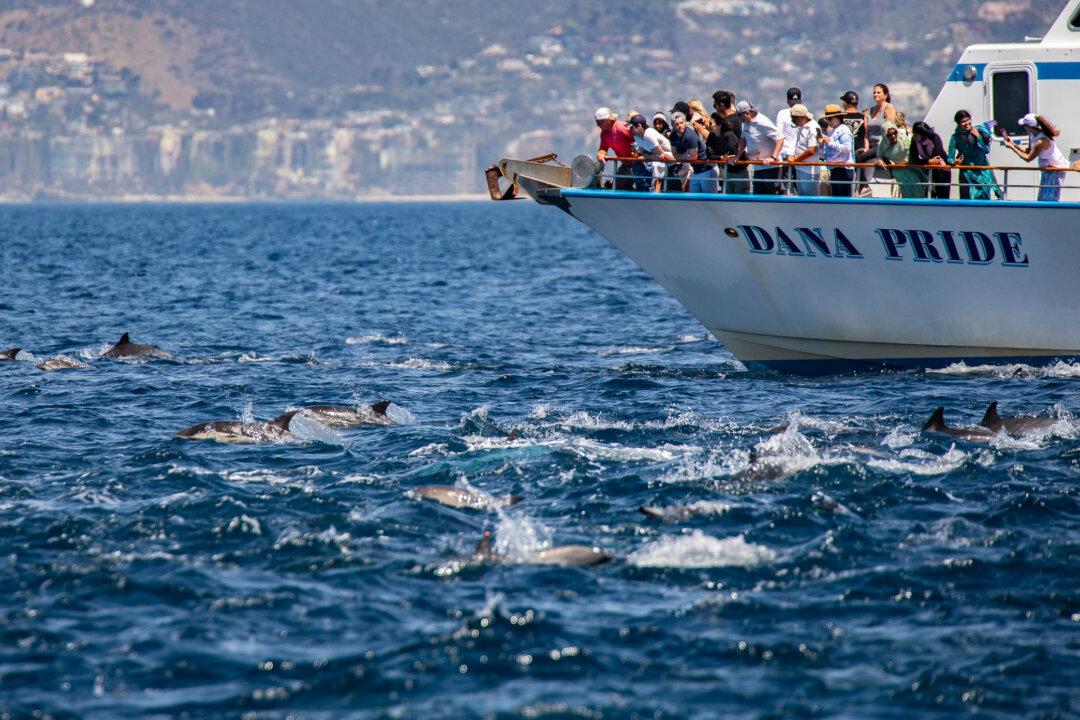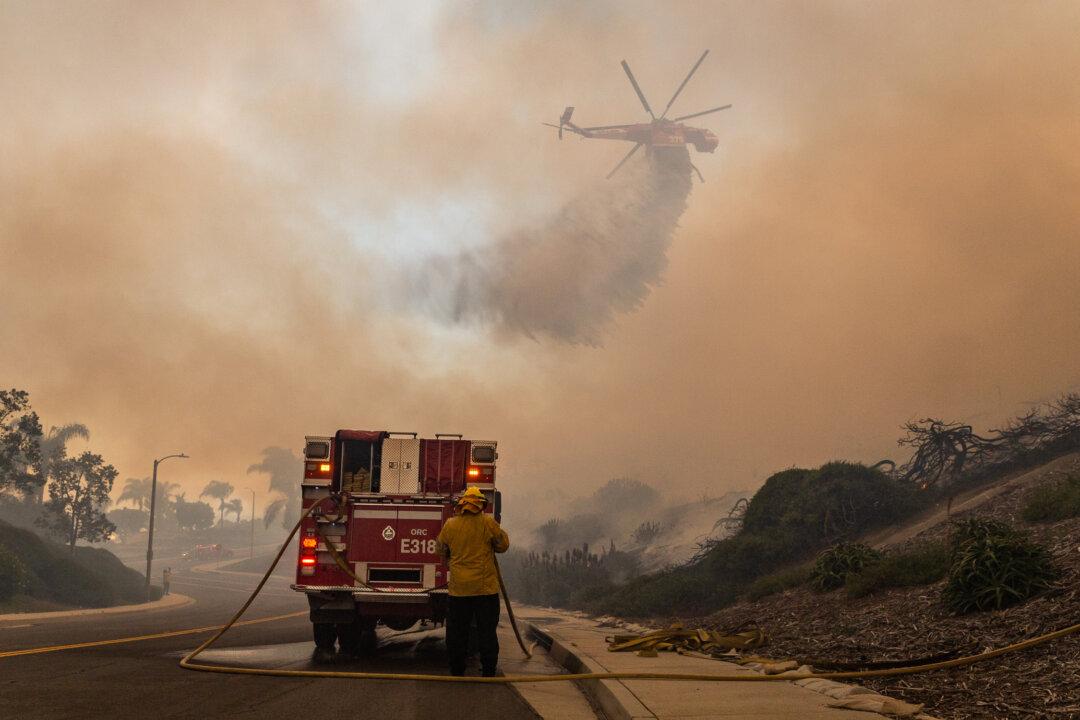DANA POINT, Calif.—Five miles off the coast aboard the Manute'a (pronounced mah-noo-tay-ah), a 50-foot catamaran sailboat with a group of 49 passengers spot two cow-calf gray whales breaching the Pacific Ocean’s surface, flip upside down and swim on their backs.
A round of applause erupts from the passengers.





